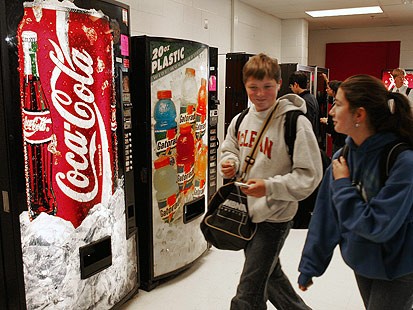
From The New York Times' Well Blog:
Schools around the country are focusing on serving more healthful food to students to combat childhood obesity. But what about the food served near the schools?
In one of the largest studies of its kind, researchers from the University of Illinois have mapped out the locations of more than 31,000 middle schools and high schools and compared them to the locations of 129,000 fast-food restaurants and convenience stores. The location of fast-food outlets close to schools is important because from 5 percent to 15 percent of high school students leave campus for lunch. And more than two-thirds of students don’t ride school buses, meaning they walk, bike, take public transit or are dropped off from cars, giving them unsupervised access before and after school to nearby eateries.
The study, published in the January issue of Health & Place, found that more than one-third of middle and high schools are located within a half-mile of a fast-food outlet or convenience store. When the study focused on the 20 largest cities, the presence of fast-food chains near schools was even more obvious. Two-thirds of urban secondary schools had at least one fast-food restaurant within walking distance, and more than half had a convenience store within a half-mile.
While previous studies have looked at the proximity of fast-food restaurants to schools in a specific community, no previous study has examined the trend across the United States. A 2005 Chicago study found that 78 percent of all kindergarten, primary and secondary schools had at least one fast-food restaurant within a half-mile, and that fast-food restaurants were clustered disproportionately around schools compared to other parts of the city. A 2007 study of four communities in Atlanta also showed that fast-food restaurants and convenience stores were closer to middle schools compared with the location of sit-down restaurants and grocery stores.
The most recent study is important because it shows that efforts to fight obesity and encourage healthful eating inside school cafeterias is likely undermined by the easy availability of fast food within walking distance of many schools.
“Attention has appropriately focused on food service, à la carte foods, vending machines and stores in schools,'’ write the study authors. “Yet, efforts to change the food environment within schools may be ineffective in reducing adolescent overweight if the surrounding neighborhood food environment is neglected.'’
The researchers focused on fast-food and convenience outlets because those stores typically serve “energy-dense” foods, or foods with a high number of calories per gram, which have been implicated in contributing to obesity. Most junk foods, including French fries, soft drinks, pastries, candy and other items popular with kids, pack a disproportionately high number of calories compared to unprocessed foods like fruits, vegetables and milk.
The data show that schools that focus only on the food served on campus may have less of an impact on kids’ health compared to those that also impose “closed-campus” lunch policies. Communities also may consider revising land use, planning and zoning policies in relation to fast-food restaurants and school location. And for parents, the data show the importance of keeping track of a child’s off-campus eating on the way to and from school.














































